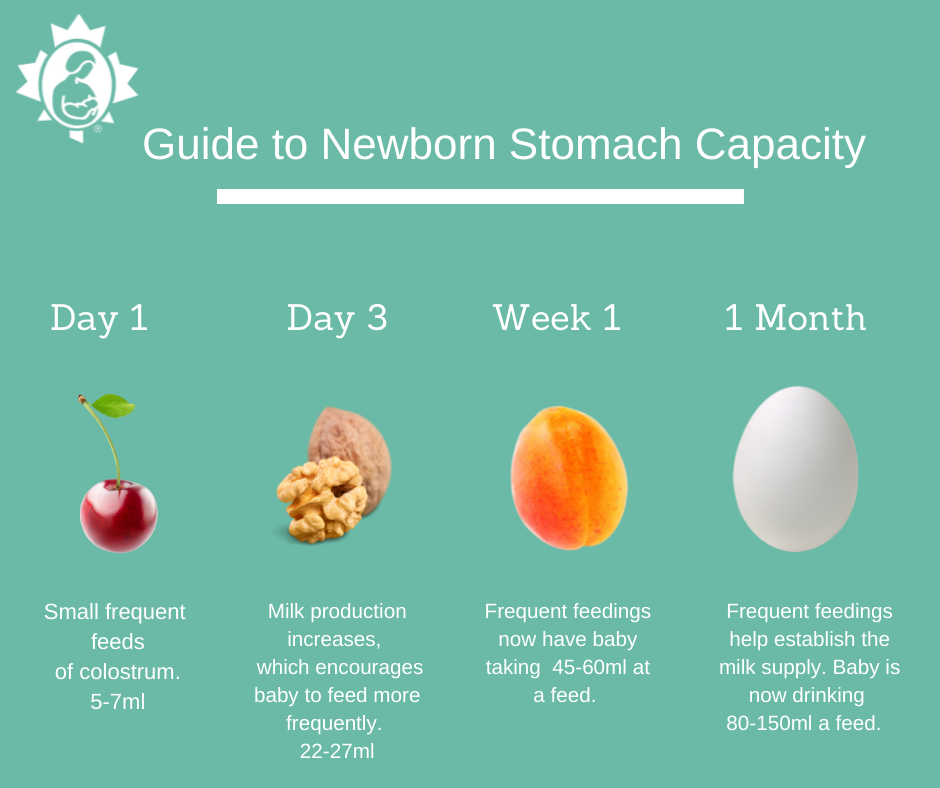
It should be self-evident that very small people will have very small stomachs but you might be surprised just how limited the capacity of a newborn’s stomach is.
Before birth your baby never felt hunger because the placenta provided constant nutrition. After birth small frequent feedings help your baby transition to an intermittent rather than a constant feeding pattern. To make this transition easier for your baby, your breasts provide small amounts of very thick, concentrated milk, called colostrum on Day 1.
A brand new baby’s stomach does not stretch on days 1 and 2. By Day 3 the stomach starts to expand to hold more milk. Interestingly, it is between day 3-5 that the milk volume starts to increase for most mothers. As your milk supply increases, your baby’s stomach expands slowly to be able to hold more milk.
When your baby is latched well and is drinking effectively, your milk supply increases to keep up with your baby’s needs. In this way, your baby stimulates your breasts to make more milk as your baby’s appetite increases.
This is how your baby’s stomach changes in the early days.
Day 1: Your baby’s stomach holds 5-7 ml (1 teaspoon) at a time. This is the size of a cherry. You will produce about 30 ml (1 oz) of early milk/colostrum in the first 24 hours. The size of your newborn’s stomach is influenced by her birth weight however the differences are not much.
Day 3: Your baby’s stomach holds about 22-27 ml (4-5 teaspoons) at a time and is about the size of a ping pong ball or a walnut.
End of Week 1: Your baby’s stomach can hold 45-60 ml (1 ½-2 oz) at a feeding and is the size of an apricot. With frequent feedings milk production increases to about 280 -576 ml (9-20 oz) per day by Day 7.
Weeks 2 & 3: Now your baby’s stomach can hold 60–90 ml (2-3 oz) at a feeding. With frequent feedings your milk supply continues to build. Your baby is taking in 590-750 ml (20-25 oz) per day by the end of the third week.
One month: Your baby will now be taking between 80-150 ml (3-5 oz) per feeding. The baby’s stomach is now about the size of a large chicken egg. The daily milk intake will be in the range of 750 – 1035 ml (20-35 oz) per day.
At one month most mothers will be producing nearly as much milk as their baby will ever need. Because the rate of growth slows as babies get older they continue to need about the same amount of breastmilk per day from one month to six months of age. The nursing pattern will change during that time even though the volume of intake over the day remains much the same.
It is expected that your newborn will feed at least 8-12 times in 24 hours and now you know why. Frequent feedings determined by your baby is exactly what her tummy, and your milk supply need.
Please consider supporting LLLC.
Updated 2022
